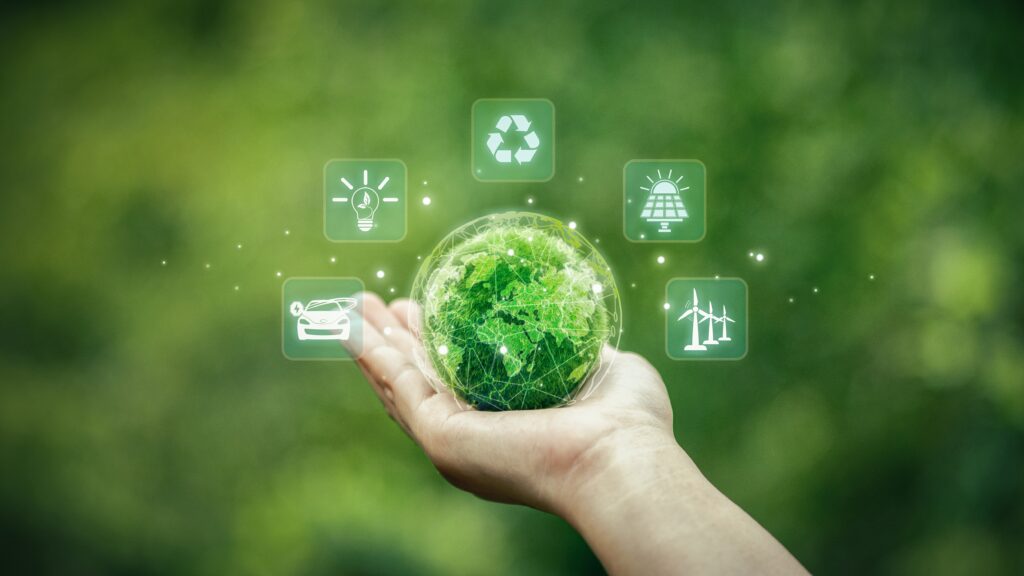In the future, supermarkets could offer foods and other consumer goods packed in standardized, reusable containers made from uncoloured mono-material plastic. These containers could also be delivered and collected by food couriers, reused multiple times, and eventually recycled into raw materials.
This is one of the visions shared by Ismo Savallampi and his colleagues at the plastics manufacturer Borealis.
“At Borealis, we are not directly involved in food retail or waste management, but we are part of the same value chain. We can develop our products and processes to support packaging reuse and material recycling,” Savallampi says. As Manager of Sustainable Feedstocks Projects, his primary focus is the long-term goal of Borealis: transitioning from fossil-based crude oil to biobased and recycled raw materials.
“To achieve this shift, collaboration with other businesses—and indeed, the whole of society—is essential. That’s why we’re participating in the 4R innovation ecosystem. Together, we can close the loop,” Savallampi says.
In addition to closing the loop through recycling, the 4R ecosystem emphasizes three other R’s: refusing and reducing consumption and reusing products. This broader focus led to its recent name change from 4Recycling to 4R.
Filling gaps in knowledge, skills, and infrastructure
4R ecosystem aims to foster solutions that enable the circular economy for plastics and their bio-based alternatives.
“We identify gaps in knowledge, skills, operational environments, technology and infrastructure and work to overcome them through collaboration with a wide range of companies and organizations,” says Anna Tenhunen-Lunkka, Head of Circular Economy at CLIC Innovation, which serves as 4R’s home base.
Since its inception in 2019, 4R has created a forum for knowledge sharing and initiated several research, development, and innovation projects—many involving entire value chains.
In addition to addressing the sustainable distribution and consumption of goods, 4R focuses on sustainable housing, transportation, and energy infrastructure. To narrow its broad scope, Tenhunen-Lunkka highlights the circularity of materials, along with related technology and solutions, as the common thread in all 4R activities.
Links to EU networks and regulation
“Beyond connecting organizations in Finland, 4R participates in EU-wide networks. These networks support 4R partners in creating large EU-funded innovation projects and in tracking and influencing regulations,” says Tuomas Lehtinen, Ecosystem Manager at Business Finland, which funds the orchestration of 4R.
According to Lehtinen, 4R has the potential to generate billion-euro business opportunities for Finland if companies can scale their new value chains or technologies to international markets.
“Finland has a great opportunity to invest in our diverse strongholds and competencies to tackle global challenges which can be turned into market opportunities. That’s why circular transition for zero waste is one of Business Finland’s key missions,” says Outi Suomi, Mission Lead at Business Finland.
“Plastics enable the green transition”
“Circular transition represents a significant change for the plastics industry, but it’s not a threat. In fact, the plastics industry enables the green transition by producing essential raw materials for green energy technologies like wind turbines,” says Vesa Kärhä, CEO of the Finnish Plastics Industries Federation.
However, Kärhä points out a major challenge: plastics production is increasingly shifting outside Europe, closer to fossil-based raw materials.
“We need Finnish and European pioneers to lead the way towards bio-based and recycled raw materials. This requires extensive cooperation within ecosystems,” Kärhä says. For Finland’s plastic industry, he sees pioneering efforts as an opportunity to achieve self-sufficiency in raw materials.
Skills and tools for ecosystem orchestrators
Leading—or orchestrating—a large innovation ecosystem is a unique task that demands time, expertise, and specialized tools. To address this, CLIC, the ecosystem’s orchestrator, has developed resources in collaboration with Katri Valkokari, Research Manager at VTT. Among these tools is the Open Innovation Ecosystem Playbook, now used to facilitate collaboration and innovation in workshops and other activities.
“Orchestration involves extensive dialogue. Unlike projects, an open innovation ecosystem does not have a fixed plan. The orchestrator’s role is to identify and highlight the direction the group is taking,” Valkokari says.
Valkokari also notes that the boundaries of an open innovation ecosystem should remain flexible, with room for numerous sub-ecosystems. Unsurprisingly, Tenhunen-Lunkka finds it challenging to calculate the exact number of 4R members or participants. According to her, around 300 organizations participate in annual events and about 20 serve as steering group members or active partners.
“4R is large, which is good. The risks associated with change diminish as the ecosystem grows. 4R gives its participants the confidence to drive change,” Tenhunen-Lunkka says, and continues:
“To address the plastic waste challenge, we need new tools and a cross-disciplinary approach. At 4R, we aim to tackle this by bringing together diverse stakeholders and breaking the challenge into clear, actionable steps through our projects.”
The 4R ecosystem is open for organisations interested in finding new business or in building new competences in circular plastics and bio-based alternatives. Get in touch with CLIC if you are interested to join the 4R ecosystem or subscribe to our newsletter!
Read the press release on the topic here.
For more information, contact Jussi Lahtinen, jussi.lahtinen@clicinnovation.fi.

